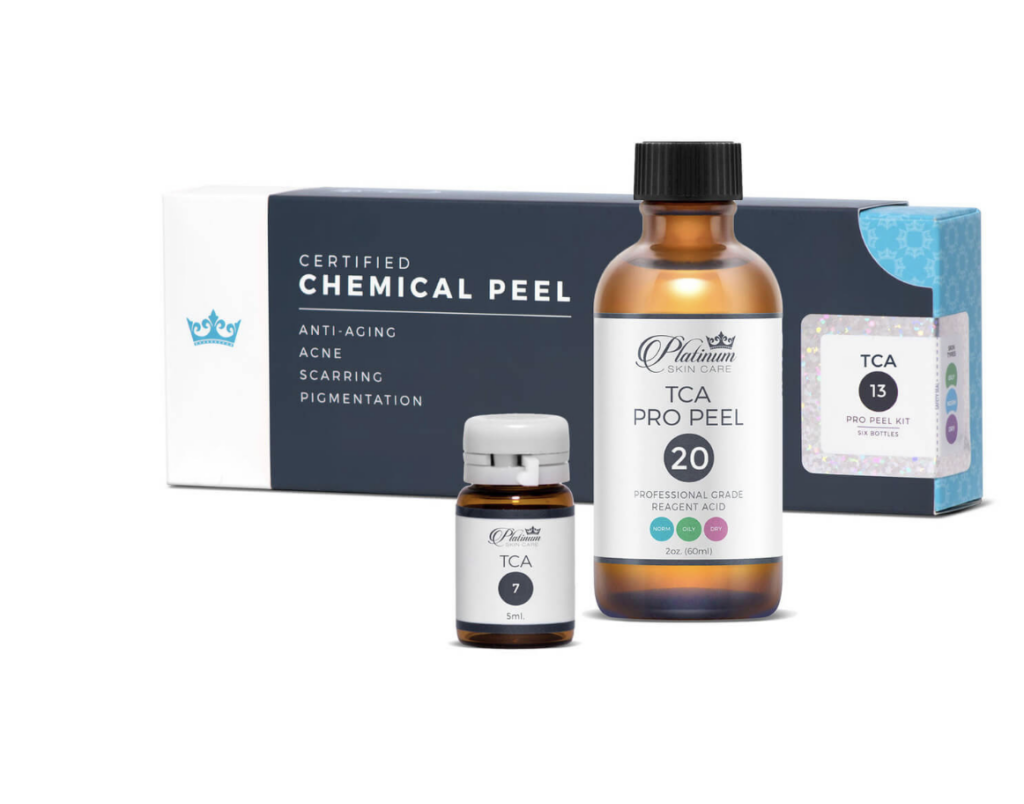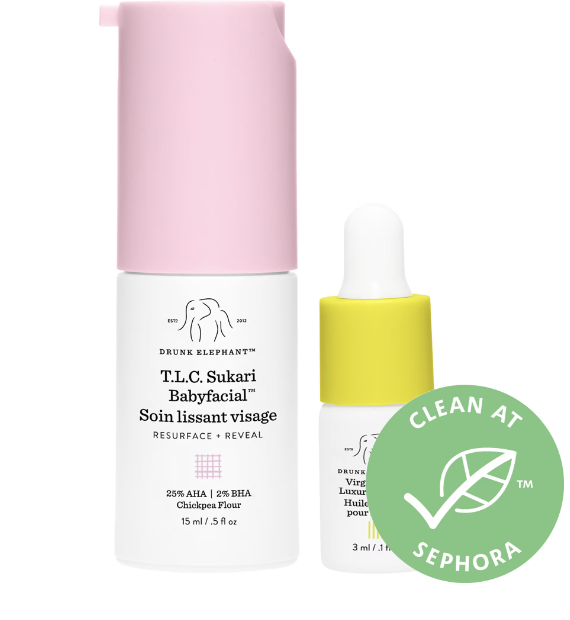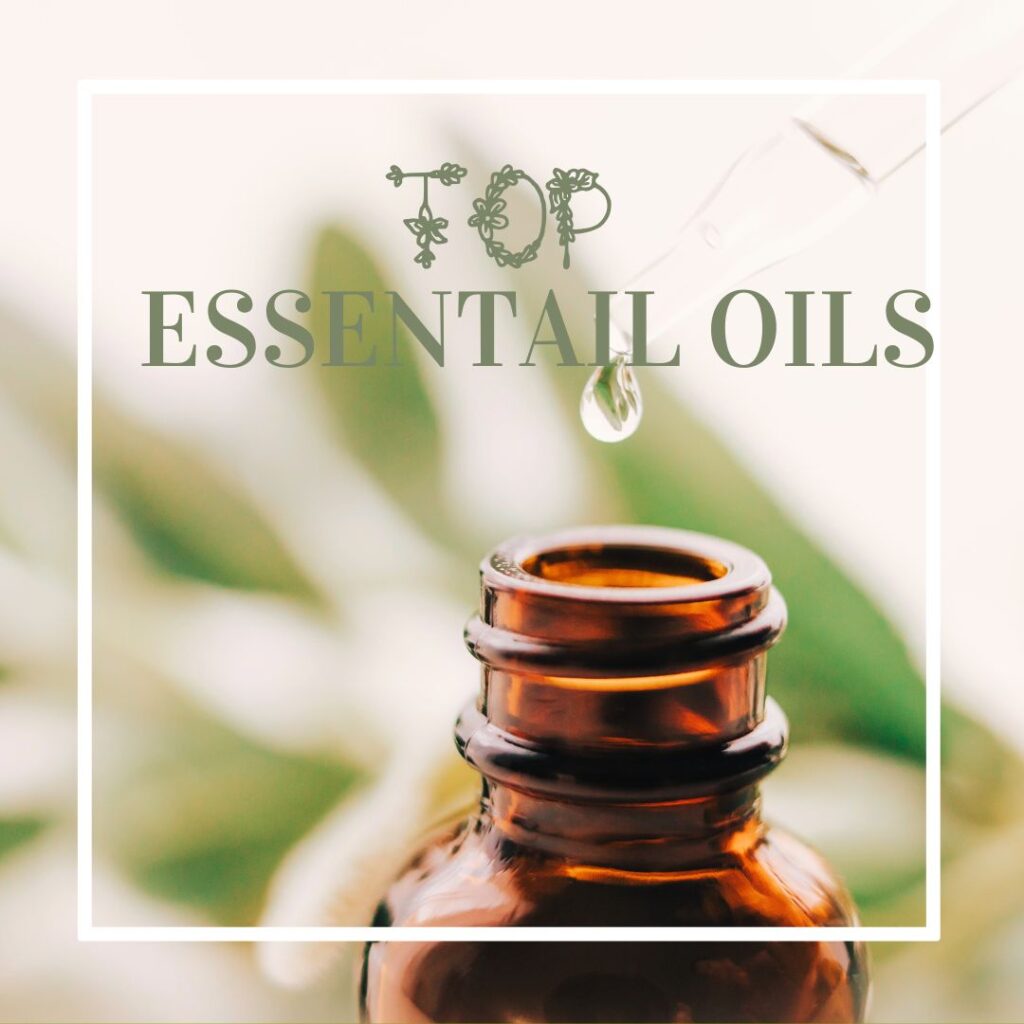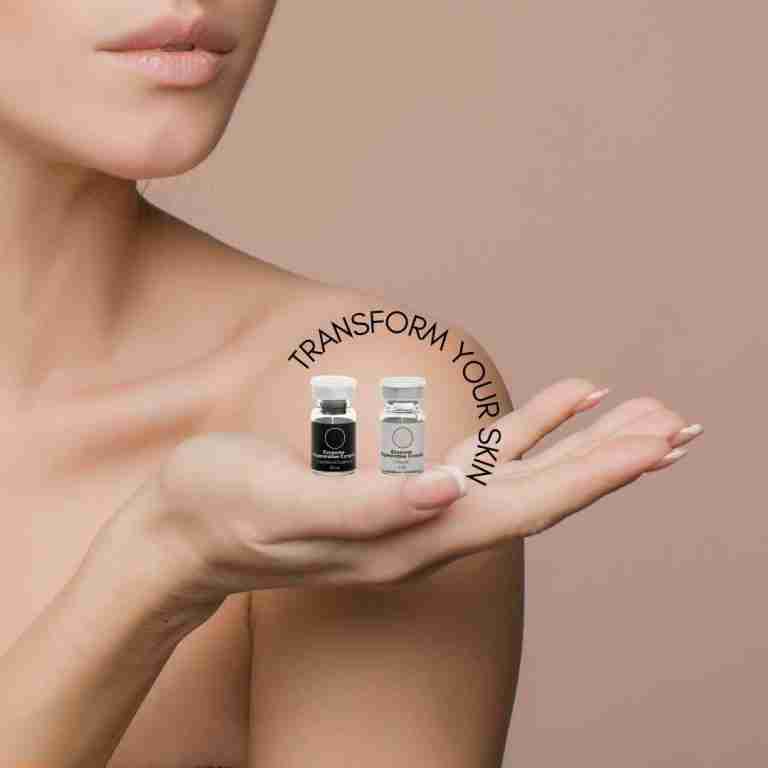The Best At-Home Chemical Peels For Hyperpigmentation
Dealing with uneven skin tone and splotchy marks? You are not alone.
Hyperpigmentation has been a long-standing battle for me. Over the years, I’ve experimented with various treatments like laser and intense pulse light to combat it. These treatments are effective but tend to be quite costly.
What’s worked wonders for me has been finding the right skin peel for at-home use. Not only is it more affordable, but it also delivers impressive results in reducing pigmentation over time.
Today, I am sharing how to reduce hyperpigmentation without leaving your home. It’s convenient, effective and less expensive than getting a professional peel. Please don’t let “at-home chemical peels” scare you. They are safe if you follow directions and start with gentle acid peels.
Before I share a list of the best home peels for hyperpigmentation, let’s do a deep dive into what causes pigmentation issues. Additionally, how peels work to reduce hyperpigmentation.
Disclosure: This post may contain affiliate links. As an Amazon Associate, I earn from qualifying purchases at no additional cost to you.

What Is Hyperpigmentation?
Hyperpigmentation is when your body produces extra melanin that cause dark pigmentation .The pigmentation causes issues like freckles, sunspots, or age spots. This happens because of factors like sun exposure, hormonal changes, aging, or skin injuries.
It’s something many of us dislike and want to diminish. My focus is to show how using chemical peels can help tackle this problem. I am sharing below the best at-home peels to reduce hyperpigmentation caused by acne scars, melasma and sun spots.

How To Treat Hyperpigmentation With Skin Peels
Chemical peels are effective in addressing hyperpigmentation because they work to exfoliate the skin, removing the top layers where the excess pigment is located. The peeling process helps to shed the darker, pigmented skin cells, revealing newer, lighter skin underneath.
These peels contain various acids like alpha hydroxy acids (AHAs), beta-hydroxy acids (BHAs), or other chemical solutions that encourage shedding of the skin’s top layer. This shedding helps to fade and reduce the appearance of hyperpigmentation, revealing a more even skin tone.
Additionally, chemical peels stimulate cell turnover, encouraging the growth of new skin cells. The new skin that emerges after the peeling process has less pigmentation, resulting in a more uniform complexion over time. It also treats wrinkles and other skin issues.

Top At-Home Chemical Peels For Hyperpigmentation On Face
Look for products with Alpha Hydroxy acid, resorcinol, lactic and salicylic acid and TCA (Trichloroacetic Acid) as active ingredients in a good chemical peel. These ingredients not only treat hyperpigmentation but also wrinkles and fine lines.
These at-home skin peels are the best to treat melasma, acne scars and dark spots in general.

Mandelic Peel 22-40+
Alpha hydroxy mandelic, is a milder irritation acid that will give excellent results with acne, pigmentation, wrinkles and melasma without risks of post inflammatory hyperpigmentation.
$6.00-$44.00
1. Mandelic Peel 22 – 40+- $6.00 to $44.00
This is the easiest peel to start with because there is less chance for irritation.
Mandelic acid is an alpha-hydroxy acid derived from bitter almonds. What makes mandelic acid stand out is its larger molecular size, ensuring slower and less aggressive skin penetration. This characteristic makes it ideal for individuals with sensitive skin. Besides treating hyperpigmentation, it also has antibacterial properties, making it effective against acne.

Jesner Pro Peel
The traditional Jessner’s peel is equal parts resorcinol, lactic and salicylic acids of 14%. It is the preferred peeling agent for oily, acne prone skin because of its safety.
$12.00-$81.00
2. Jesner Pro Peel
Jessner’s solution combines salicylic acid, lactic acid, and resorcinol, forming a distinctive blend tailored for individuals with oily or acne-prone skin. Treats all types of pigmentation
Known for its ability to penetrate the skin. Jessner peels provide an extensive approach to treating hyperpigmentation, acne scars, and diminishing the visibility of profound wrinkles compared to alpha-hydroxy acid peels.

TCA-7-13-20-30
The true antiaging peel. Stimulate collagen, glycosaminoglycans and elastin fibers with a TCA peel.
TCA is the peel that all other peels are compared to! It has been highly used for decades, is easy to use, and very predictable. $13.00 TO $88.00
3. TCA (Trichloroacetic acid) – 7 – 13 – 20 – 30
This is the strongest at-home chemical skin peel. This known as the all around performer. This is the peel I have been using for the past 6 months.
A TCA (Trichloroacetic Acid) skin peel is a type of chemical peel used to exfoliate and rejuvenate the skin. It involves applying a solution containing TCA, which is a type of acid, to the skin. TCA peels come in different concentrations, and the depth of the peel can be adjusted based on the concentration used.

These peels effectively address various skin concerns, such as fine lines, wrinkles, pigmentation irregularities, sun damage, and specific types of acne scars. TCA peels work by causing the outer layers of the skin to peel off, stimulating the growth of new skin cells. This process leads to smoother, more even-toned skin with reduced signs of aging, sun damage, and other skin imperfections.
I use this product. I highly recommend this peel from Platinum Skincare because the education and instruction (peel university) is impressive.

Dr. Gross Skincare’s Alpha Beta Peel Pads
Two step individually packaged treatment with a blend of AHAs and BHAs.
Sephora $92.00
4. Dr. Gross Skincare’s Alpha Beta Peel Pads
Dr. Dennis Gross Skincare’s Alpha Beta Extra Strength Daily Peel Pads comes to mind first. This two-step, individually packaged treatment is the gold standard and contains a blend of AHAs and BHAs. Labeled clearly, you simply swipe step one onto your skin, followed by step two, unlocking clear, radiant skin.

The Drunk Elephant T.L.C. Sukari Babyfacial Mask
Clean product that contains 25% AHAs and 2% BHA by the way of salicylic acid.
Sephora:$28.00
5. Drunk Elephant T.L.C. Sukari AHA & BHA Mask
The Drunk Elephant T.L.C. Sukari Babyfacial AHA + BHA Mask great for hyperpigmentation and dullness, working for all skin types. It’s a lightweight cream that contains 25 percent AHAs and two percent BHA by way of salicylic acid. There’s also chickpea flour in there to balance skin.

Ourself Brighting Peel
A high-concentration, allover brightening peel with 34% glycolic acid. This popular peel will cause slight peeling. It’s important to follow the steps for pre and post peel instructions.
Nordstrom: $110
6. Ourself Brightening Peel Kit
A high-concentration, allover brightening peel with 34% glycolic acid. Ideal for any skin type and tone.
What it does: The peel helps improve uneven pigmentation, fine lines, pores and texture, all in the comfort of your home. No downtime.
What Causes Hyperpigmentation?
There are several types of hyperpigmentation, the common ones being melasma, sunspots, and post-inflammatory hyperpigmentation.
- Melasma is caused by hormonal changes and may develop during pregnancy. Areas of hyperpigmentation can appear on any area of the body, but they appear most commonly on the stomach and face.
- Sunspots also called liver or solar lentigines, sunspots are common. They’re related to excess sun exposure over time. Generally, they appear as spots on areas exposed to the sun, like the hands and face.
- Post-inflammatory hyperpigmentation is a result of injury or inflammation to the skin. A common cause of this type is acne. Post Inflammatory Hyperpigmentation results from the overproduction of melanin or an irregular dispersion of pigment after an inflammation has gone down. The area swells, then darkens as the swelling goes down. That is PIH in action. Depending on where the pigment is in the layers of skin will determine its color.
Consistent Use Of Chemical Peels Is The Key
The good news is that consistent use of chemical peels, along with a proper skincare routine, will gradually diminish the appearance of hyperpigmentation, leading to a clearer and more even-toned complexion.
When I discovered The Platinum Skincare Peels, I was so impressed. The education and video tutorials made the process simple and not scary. I highly recommend this company for any at home peels. The top three peels below are all from Platinum Skincare.
Levels Of At-Home Skin Peels
There are different levels of chemical Peels. Chemical peels come in various types, each distinguished by the depth of skin penetration and the specific acid or compound employed:
Light Chemical Peels:
Also referred to as “lunchtime peels,” these use mild acids like alpha-hydroxy acid (AHA) to target only the outer skin layer. They delicately exfoliate, addressing minor skin discoloration and promoting a rejuvenated appearance.
Medium Chemical Peels:
These penetrate both the surface and intermediate layers of the skin using compounds like trichloroacetic or glycolic acid. Moderate peels address concerns such as age spots, fine lines, wrinkles, and moderate skin discoloration.
Deep Chemical Peels:
Employing phenol, deep peels reach the mid to lower layers of the skin. They’re suitable for treating moderate lines, shallow scars, and age spots. Given their intensity, they are performed less frequently and cause an extended recovery period. Don’t perform these at home please! Go see a specialist.
What Factors To Consider When Choosing At Home Peels
1. Skin Type
Understanding different skin types and conditions is key to finding the best chemical peels. Whether it’s for oily skin, dry skin, acne-prone skin, or even dark skin tones, there is various options available to cater to specific needs. From superficial to medium-depth peels, these peels work to exfoliate the skin, aiding in the removal of dead skin cells and helping to improve skin texture.
2. Skin Condition
The type of hyperpigmentation, the depth of scars, and the presence of any skin conditions will influence the type of peel chosen.
3. Downtime
Recovery time varies depending on the depth of the peel. While superficial peels might require little to no downtime, medium peels you will experience some peeling and deep peels the downtime is much longer.
4. Potential Side Effects
Understanding potential side effects, such as redness, scarring, or infection, is crucial.
5. Peel Ingredients
When considering at-home peels, it’s essential to select products with active ingredients like alpha hydroxy acids (AHAs) such as glycolic acid or lactic acid, and beta-hydroxy acids (BHAs) like salicylic acid. These peels assist in cell turnover, promoting collagen production , and targeting issues like acne scars, age spots, and uneven skin tone.
Vitamin C, hyaluronic acid, and ingredients like kojic acid and mandelic acid in some peels will help combat sun damage, age spots, and the appearance of dark spots. Such peels can also address concerns like dull skin, excess oil, and post-inflammatory hyperpigmentation.
Why It Is Important To Do A Skin Test
While at-home peels are a good option, it’s crucial to start with patch testing and ensuring regular use, especially for those trying chemical peels for the first time. However, for deeper skin concerns, professional peels by a board-certified dermatologist might yield the best results, especially with deep chemical peels like trichloroacetic acid (TCA) peels or deep peels addressing hormonal changes.
It’s interesting to note that the use of chemical peels isn’t a modern innovation—ancient Egyptians used citric acids for similar exfoliation benefits. Today, there are at-home versions of peels like Dr. Dennis Gross peel pads or other skincare products are formulated with various acids to cater to different skin concerns.
Considering the desired results and the strength of the peel, it’s essential to assess your skin condition and consult a professional to determine the best way forward. Laser treatments or green tea extract, known for their impact on collagen production and as antioxidants fighting free radicals, may complement the effects of chemical peels.
In conclusion, whether opting for at-home products or professional peels, addressing skin concerns through regular peels may help maintain smoother, healthier skin. I hope this information helps guide you in choosing the right peels for your skincare routine.
Here’s to achieving the radiant skin you deserve!
Most Frequently Asked Questions:
Can chemical peels remove all types of hyperpigmentation?
Chemical peels are effective in treating various forms of hyperpigmentation, including melasma, sunspots, and post-inflammatory hyperpigmentation. However, their efficacy can vary depending on the depth and type of peel, the severity of the hyperpigmentation, and individual skin characteristics.
What is the duration of the peeling phase?
The timeframe for recovery differs based on the depth of the peel:
Light peels: Minor flaking or peeling lasting 3-7 days. Moderate peels: Noticeable peeling extending for 7-14 days. Deep peels: Substantial peeling and potential crusting lasting 2-3 weeks.
It’s crucial to permit the skin to shed naturally and avoid picking or peeling the skin, as this could result in scarring or exacerbate pigmentation issues.
Are Chemical Peels Painful?
Mild tingling or burning may occur with superficial peels, while deeper peels can induce more discomfort. Therefore, many individuals begin with a single layer and gradually increase to understand their skins reactions.
I also suggest using red light therapy to diminish wrinkles and pigmentation issues. Read more about red light therapy there.













